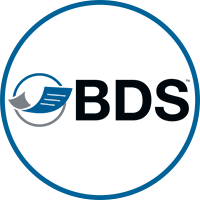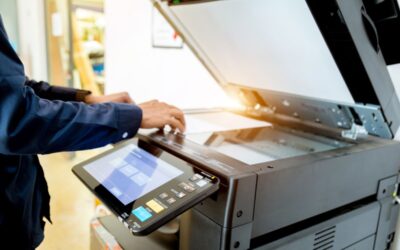Two of the most popular printer models available to offices globally are laser printers and Inkjet printers. The debate between which device is better between both boils down to one key consideration: laser vs. Inkjet cost per page. For organizations focused on operational efficiency, understanding the actual cost implications of each option is a crucial first step. Especially when the costs extend beyond cost per page and include maintenance and supply management.
BDS, the leading print technology provider in New England and Florida, has spent years helping offices from diverse backgrounds make smart, scalable decisions for their print infrastructures. While we offer a broad portfolio of industry-leading devices, our expertise is often called upon to help determine the right fit for your individual print environment. Today, we will walk through what really separates laser and inkjet devices from a cost-per-page perspective.
What is Cost Per Page?
Cost per page (CPP) is the amount it costs to print a single page off your device. This process factors in the price of consumables (like your printer ink or toner), page yield, as well as the frequency of replacement. The reason this metric is considered essential is because it is the most accurate indicator of the long-term value a printer can provide. In other words, it can help your business make an educated decision regarding finding the right printer for your needs and budget.
Laser vs. Inkjet: Cost Per Page Difference

When it comes to laser printers, these devices often have significantly higher yields than inkjet printers, due to the usage of toner cartridges. This means fewer interruptions, less maintenance, and more consistent output, especially at higher volumes. Additionally, toner is superior when it comes to print quality. Some offices avoid laser printers because of the higher upfront cost. However, when factoring in the return of investment, it is a more cost-effective option, particularly in businesses where print volume is high.
In contrast, inkjet printers are usually have a lower initial price tag, which is a huge draw for businesses looking to save on their budget. This is understandable, as affordability can be appealing. However, it can also be misleading if you do not consider the big picture regarding financing and maintaining your device. For example, ink cartridges have lower yields, and depending on the model, you may find yourself replacing them more frequently than you would expect.
This does not mean that inkjet printers are the enemy when it comes to cost per page. Instead, you have to adjust your needs to ensure you are receiving the most return from your investment. For offices that have a low print volume and mostly color or photo-heavy prints, inkjets can be a strong fit! However, for offices seeking a higher return for day-to-day business use, the cost per page will likely be higher overall in comparison.
How Do You Determine Cost Per Page?
For some perspective, the average cost per page for a monochrome laser printer can be as low as 2-5 cents, while inkjet printers can run anywhere from 5-10 cents per black and white page. Color printing further widens the gap, with laser models offering more competitive rates on color cost per page when compared to many of the popular inkjet models. This is all to say, determining the exact cost per page is going to depend on the model and print frequency in your office.
Still, it is worth noting that the yield will be higher with toner. This is not to push you into investing in a laser printer, as cost per page is not the only consideration when it comes to investment in new equipment. Variables like ink and toner efficiency are also important. For example, many inkjet cartridges are susceptible to drying out without regular use. Furthermore, this can lead to waste and more spending on replacements. In contrast, laser printers rely on dry toner, which eliminates this risk.
Although laser printers may be the most predictable option, it still does not mean it is the perfect fit for everyone. Still, from a fleet management perspective, understanding your print environment through the lens of CPP helps pinpoint inefficiencies and identify opportunities for optimization.
What Makes BDS Different from Other Print Providers?
With over 40 years of experience assisting local offices with their printer fleet management, we notice one thing our customers struggle with prior to joining BDS: real-time print data. It is one thing to know the manufacturer-stated yield of a toner cartridge, but it is another thing to have a team entirely track your actual usage, identify waste patterns, and have the suitable infrastructure in place to course-correct efficiently.
This is where BDS thrives. We are not aiming to only sell devices. Instead, we focus on examining and elevating your entire print ecosystem. This includes your workflows to your user behavior and service response times. Our local headquarters in Marlborough, MA and West Palm Beach, FL allow us to offer a service that is both personal and efficient. Our focus on unparalleled technology and impeccable support means we are not just selling you a device; we are standing behind it.
When you are evaluating your next office printer, it helps to have a partner who understands the nuance and unique needs of your office. At BDS, we engineer solutions that assess your real-world usage, consider your future growth, and deliver tailored recommendations that maximize value without compromising quality.
To stay updated on the latest industry news and developments, follow BDS on LinkedIn, YouTube, Facebook, Instagram, and TikTok today!






